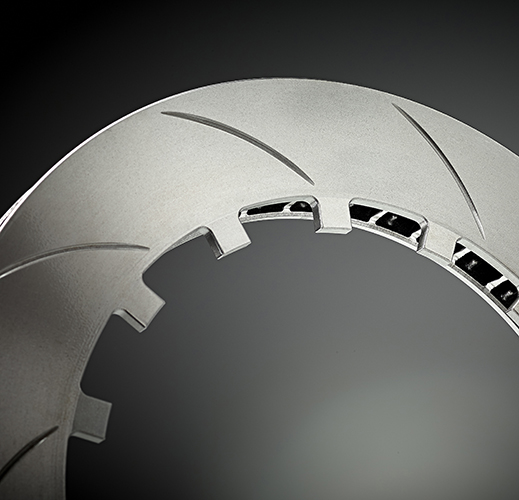
2) Attachment between the bell and braking band
In the world of rallies, the bushing drag system, with conventional sprocket, is still widely used today.
Yet, Brembo has successfully introduced the “spline” dragging system between the housing and the hub, a sort of aluminum sprocket gear that has already been used in endurance races with great results.
However, during races on tracks, the cars run on smooth surfaces that are devoid of any objects that might be dangerous for the braking system, like rocks, gravel, sand and snow.
Since all of these potentially disruptive elements are found in rallies, until now the spline dragging system has always been discouraged.
By reducing the measurements of the hub to a minimum and using materials that are lighter than steel, plus the spline, the weight of the corner has gone down significantly and now transmits braking torque better than traditional systems.
The gear goes through an electrochemical process of anodic oxidation that ensures greater abrasion resistance, increased hardness of the surface and unprecedented dirt resistance.
